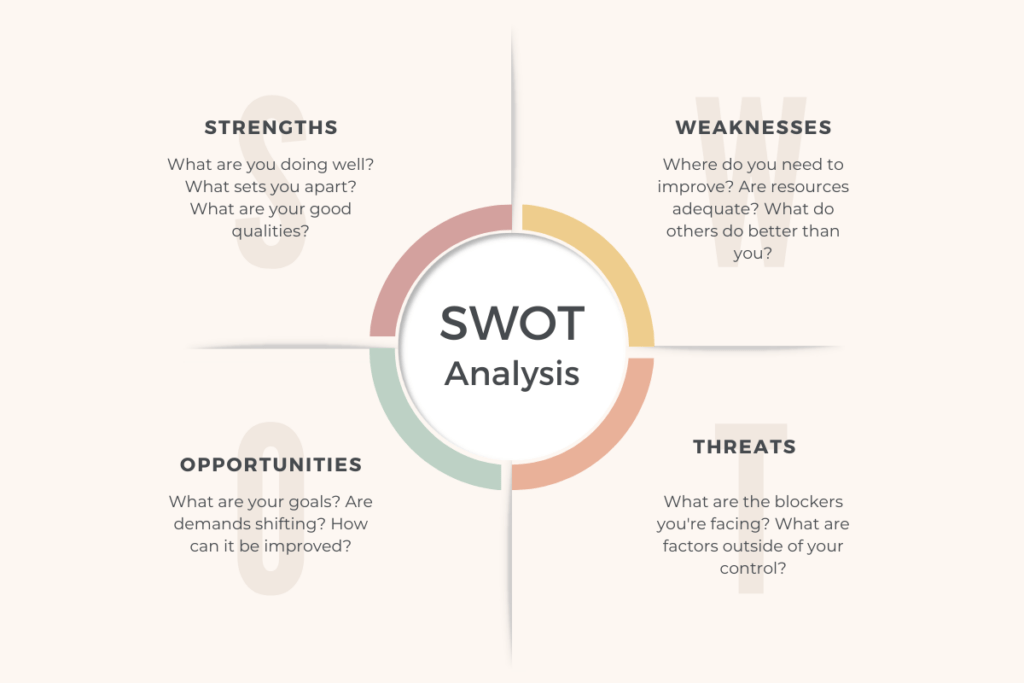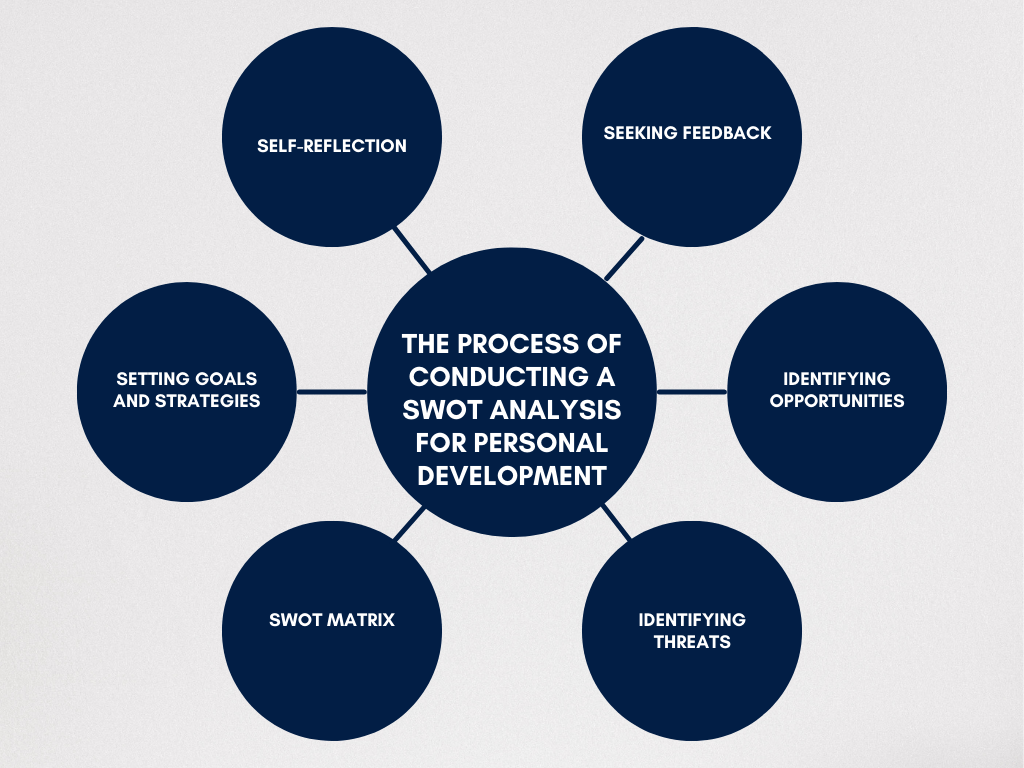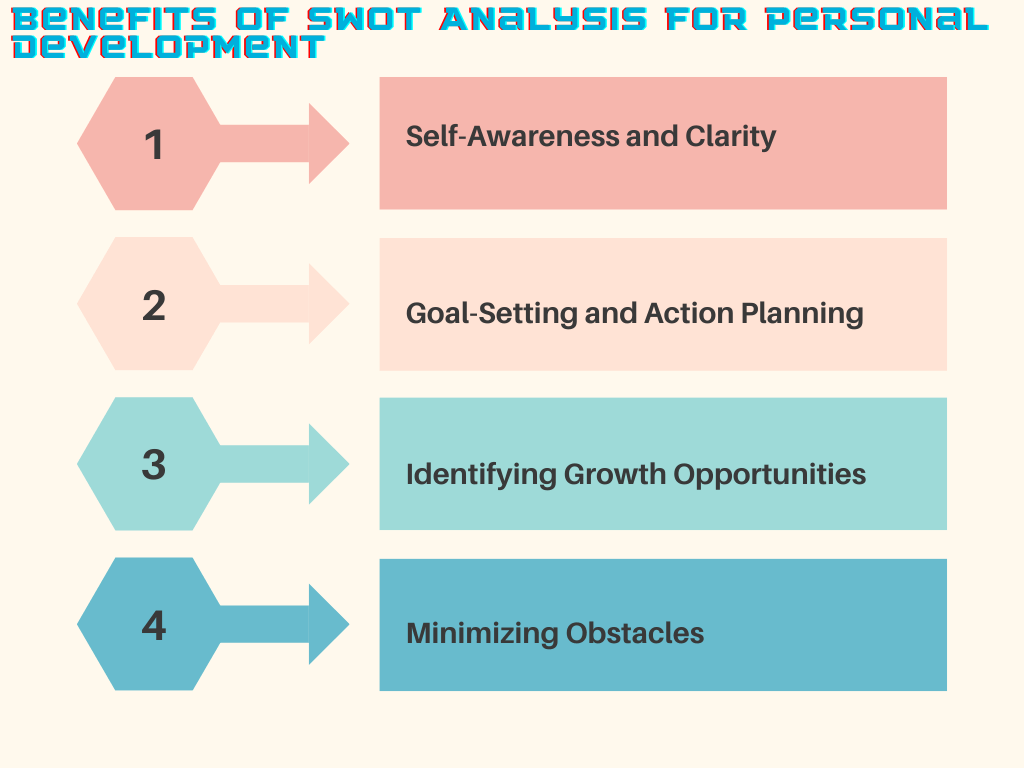SWOT Analysis for Personal Development
SWOT Analysis for Personal Development: Personal development is a lifelong journey that allows individuals to enhance their skills, broaden their knowledge, and reach their full potential. To embark on this journey effectively, it is essential to conduct a SWOT analysis. Originally used in the business world, a SWOT analysis (Strengths, Weaknesses, Opportunities, and Threats) has proven to be a valuable tool for personal development as well. In this article, we will delve into the concept of SWOT analysis for personal development and explore its application in unlocking your full potential.

Understanding SWOT Analysis
To begin, let’s define the four components of a SWOT analysis and understand their relevance to personal development:
1. Strengths:
Strengths encompass your internal qualities and assets that give you a competitive advantage over others. These may include your skills, knowledge, experiences, personality traits, and relationships that contribute to your personal growth. Identifying and leveraging your strengths is crucial for personal development.
2. Weaknesses:
Weaknesses refer to the areas where you lack or require improvement. Recognizing your weaknesses allows you to develop strategies to overcome them through learning, training, or seeking support. Addressing weaknesses is vital for personal growth and development.
3. Opportunities:
Opportunities represent external factors that could positively impact your personal development. These may arise from industry trends, technological advancements, networking, or personal circumstances. Identifying and capitalizing on opportunities can provide a platform for growth and success.
4. Threats:
Threats are external factors that may hinder your personal development. These may include societal or economic challenges, competition, or personal obstacles. By identifying threats, you can devise strategies to minimize their impact and maintain focus on your personal growth goals.
The Process of Conducting a SWOT Analysis for Personal Development
Now that we understand the components of a SWOT analysis, let’s explore the step-by-step process of conducting one for personal development:

1. Self-Reflection:
Begin by reflecting on your past experiences, achievements, and failures. Evaluate your skills, knowledge, and personality traits. This introspective analysis will help identify your strengths and weaknesses.
2. Seeking Feedback:
Seek feedback from trusted individuals, such as mentors, friends, or colleagues, to gain an external perspective on your strengths and weaknesses. This process helps minimize bias and provides a well-rounded view of your personal development areas.
3. Identifying Opportunities:
Stay updated with industry trends and changes, as well as personal circumstances that may present opportunities for growth. Actively engage in networking to expand your horizons and discover potential opportunities.
4. Identifying Threats:
Recognize external factors that may hinder your personal development. Understand market challenges, competition, or personal obstacles that could impede your progress. By doing so, you can proactively address potential threats.
5. SWOT Matrix:
Develop a SWOT matrix that incorporates your strengths, weaknesses, opportunities, and threats. This visual representation helps you make better decisions by matching your strengths with opportunities and overcoming weaknesses and threats.
6. Setting Goals and Strategies:
Based on your SWOT analysis, define clear and achievable goals for personal development. Create strategies that capitalize on your strengths and opportunities while mitigating weaknesses and threats. Break down your goals into specific action steps to ensure progress.
Case Studies and Real-Life Examples
1. Sarah’s SWOT Analysis:
Sarah conducts a SWOT analysis and discovers she has excellent public speaking skills (strength) but lacks proficiency in project management (weakness). She identifies an opportunity to improve her project management skills through certification courses. By addressing her weakness, Sarah enhances her overall professional development.
2. John’s SWOT Analysis:
John realizes his passion for entrepreneurship (strength) but identifies a lack of networking opportunities (weakness). He actively participates in entrepreneurial events and builds relationships with mentors and peers (strength + opportunity). John’s strategic networking leads to a successful startup venture.
Benefits of SWOT Analysis for Personal Development

1. Self-Awareness and Clarity:
A SWOT analysis brings clarity to your personal development journey, enabling you to understand your strengths, weaknesses, opportunities, and threats. This self-awareness allows you to align your goals and strategies effectively.
2. Goal-Setting and Action Planning:
SWOT analysis aids in setting specific, measurable, achievable, relevant, and time-bound (SMART) goals. With a clear understanding of your resources and challenges, you can develop a focused action plan for personal growth.
3. Identifying Growth Opportunities:
Through a SWOT analysis, you identify opportunities that align with your strengths. Capitalizing on these opportunities broadens your horizons and fosters continuous personal development.
4. Minimizing Obstacles:
Recognizing threats helps you prepare strategies to overcome or minimize their impact on your personal development journey. By addressing threats in advance, you can maintain momentum towards your goals.
Conclusion
In conclusion, a SWOT analysis is a powerful tool for personal development. By understanding your strengths, weaknesses, opportunities, and threats, you can effectively navigate your journey towards self-improvement. Regularly conducting a SWOT analysis allows for continuous adaptation and growth, unlocking your full potential as you progress through life. Embrace the power of SWOT analysis and embark on an exciting personal development journey today
Samrat is a Delhi-based MBA from the Indian Institute of Management. He is a Strategy, AI, and Marketing Enthusiast and passionately writes about core and emerging topics in Management studies. Reach out to his LinkedIn for a discussion or follow his Quora Page

